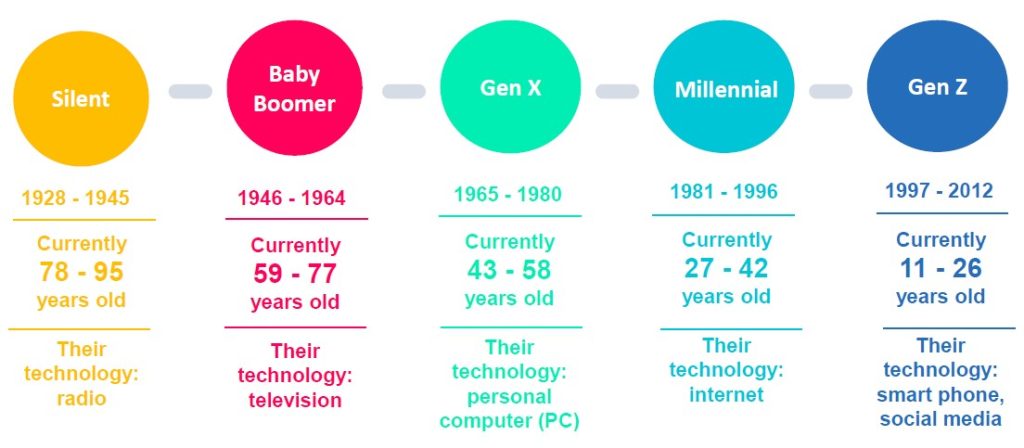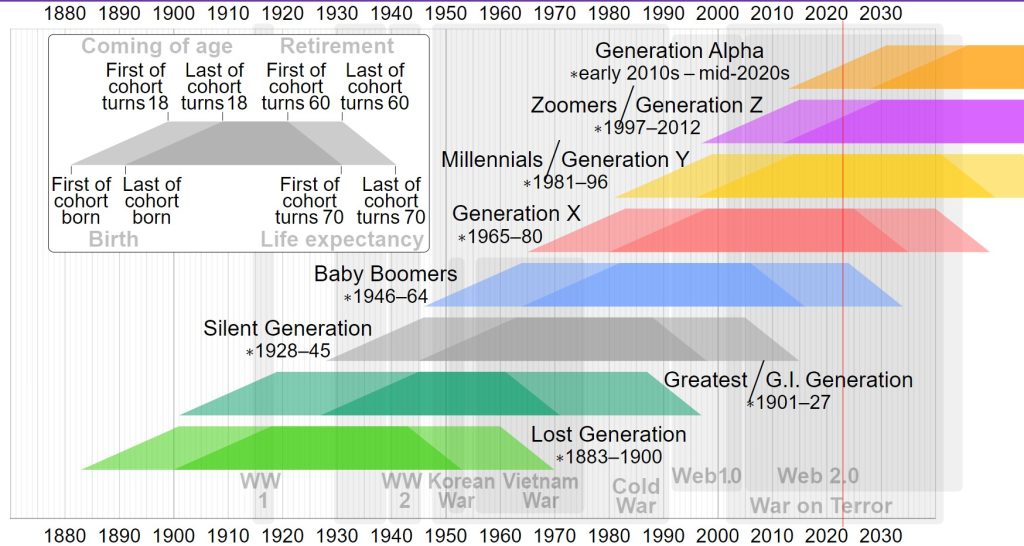Keeping Skills Bright and Shiny
by Susan Margaret
The average shelf life of skills is less than five years. Think about that. What skills have you learned over the past few years? How have you adapted what you learned then to how you use those skills now? Are you holding on to skills that no longer work? Are you learning new skills?
New technologies that are rapidly transforming the world of work include Big Data, the Internet of Things, artificial intelligence, and machine learning. These technologies are impacting employee experiences. Consider the impact of technology on remote work. We can collaborate virtually for years without ever meeting in person.
When asked what worries them most at work, employees are most concerned about their position changing or becoming obsolete.  People want to learn skills that make them valuable to the organization and prevent them from becoming obsolete.
People want to learn skills that make them valuable to the organization and prevent them from becoming obsolete.
Yet, as important as learning and development are, on average employees only devote 1% of their time (24 minutes per week) to learning and development. Learning and development receives so little time because people are overwhelmed, distracted, and impatient. But if we intend to keep our workforce current, how do we keep our skills honed? By making our learning purposeful, convenient, varied, social, challenging, and led by motivating experts.
The days of long training sessions are gone. Today’s workforce needs quick, short informative sessions. Ideas to create an effective, high-performance multigenerational workforce:
- Provide flexibility. There is not a one-size-fits-all solution for each generation or all employees. Be flexible in providing it. This includes flexible hours and work arrangements, locations, benefits, projects, and more.
- Offer opportunities for continuous learning. The greatest fear for employees is becoming obsolete. The solution is continuous learning.
- Reverse, mutual or dual mentoring: Pair younger workers with older workers to provide mentoring on new technologies, like social media, and to share insights. This builds relationships across generations and often results in “mutual mentoring”. This also exposes individuals to different roles in the organization. In dual mentoring, individuals—of any age—identify something of value that they can teach to others, and also identify something that they want to learn from someone else. Each person is both a mentor and a mentee. This model can be an excellent way to get generations talking to and learning from each other.
- Curation. Increasingly, learning is not merely provided in classes; it involves curating information and content so learners can easily find what they need.
- Peer-to-peer. Sometimes, the best learning comes from interactions with peers. Collaborative learning. Identify “centers of expertise,” facilitate connections, and manage communities. Simply, coworkers teaching other coworkers. Colleagues within the same department, or working at the same level, share what they know with each other. This strategy encourages collaboration and capitalizes on the shared experiences that coworkers have with one another. Many learners feel more comfortable asking questions from a peer vs. a manager or trainer.
Talkin’ About Which Generation?
by Susan Margaret

Generations give us a way to look at Americans in their place in the life cycle and by their “membership” in the cohort of individuals who were born around the same time. Currently there are five generations in today’s workforce: Silents, Baby Boomers, Gen X, Millennials, and Gen Z.
Silents’ presence is ever decreasing in the workforce, just as Gen Z is increasing. We’ll continue to see that inevitable “slide” over time. Boomers are the largest generation in management positions in the workforce but make up only 25% of the workforce. Everyday 10,000 Baby Boomers turn 65, and the majority (about 80%) plan to retire shortly after turning 65. That leaves a lot of management positions to be filled. Because the Boomer cohort is so large and the Gen X group is so small, many of these positions will need to go to Millennials. In past generations, developing a leadership pipeline was a 20-25 year process. But that’s the “old” way of thinking because that pipeline simply no longer exists. Changes need to happen now to get Millennials ready for these big jobs very quickly. Which requires communication.

Each generation has different ways of communicating, different ways of working, and different expectations from their employers for compensation, benefits, and advancement. Differences can provide opportunities for diversity and growth, but also bring about misinformation.
The challenge in today’s workforce is learning how to collaborate with and appreciate the unique preferences, habits, and behaviors of colleagues who grew up in different times than us. It’s hard to see things from another’s perspective when we fundamentally can’t relate to them because of a vast age difference. That’s often when we resort to using harmful stereotypes and blaming solvable problems on each other, instead of working to understand those differences.
Stereotypes
Stereotypes can be harmful because we assume something about “them” without facts. We are dismissing them and their beliefs, values, or goals. And job performance and productivity can be negatively impacted as a result. Having an age-diverse staff has incredible benefits, like increased productivity and better problem solving. Studies have proven a lack of generational diversity at work can actually cause current employees to disengage or quit.
The first step to overcoming generational stereotypes, and developing mutual respect, is to debunk these stereotypes. But how can you look past the stereotype and understand the differences? What has the other person experienced that has shaped them? Remember that not everyone reacts the same way to the “generational milestones” of their generation. Assumptions (stereotypes) make workers feel singled-out and judged before they even get to work. That affects work performance. At the root, these stereotypes are age biases.
Encourage your teams to communicate their preferences openly. Just as there’s no right or wrong work style, there’s no right or wrong way to communicate. Different generations may prefer one method over another. During meetings, make sure everybody is heard and considered, regardless of their age or level of seniority. Create an inclusive decision-making process that encourages open dialogue and psychological safety.
Removing Barriers
By making a conscious effort to remove barriers that people experience due to their age (young and old alike), we attract and keep multigenerational diversity (having people of various ages represented across teams) in the workplace. We need to make sure we’re not reinforcing or building barriers. Something like asking the youngest member of a team to address the tech issues because “they’ll know what to do”; or asking the oldest member to make phone calls because “they’ve been doing it their whole life”. These are simplistic examples, but the possibilities are endless.
Inevitably there will be bumps and challenges along the way and you’ll come across sticking points. This happens when different generations working together would naturally answer a question differently. Generational researcher, Haydn Shaw, identified these 12 common areas where sticking points arise at work.
- Communication: What is the best way to interact with my coworkers?
- Decision making: How do we decide what to do?
- Dress code: How casually can I dress?
- Feedback: How often do I want input?
- Fun at work: How much fun is allowed at work?
- Knowledge transfer: How do we pass on critical knowledge?
- Loyalty: When is it ok to move on?
- Meetings: What should happen in our meetings?
- Policies: Are policies rules or just guidelines?
- Respect: How do I get others to respect me?
- Training: How do I learn best?
- Work ethic: How many hours are required? When must I work them?
The generational divide has been around for a very long time and these sticking points aren’t going away. But how we decide to act on them determines if we let these differences separate us or if we lead through them.
Providing Effective Feedback
by Dorothy Hayden
Can I share some feedback with you? Your choices to this question are “yes” or “no.” The chances are also fairly high that you may have just felt a little stressed reading this question. It is okay to recognize that stress.
I chose this question as my introduction because it is not the way you want to approach providing feedback. If the person accepts your offer for feedback, you should only expect that your feedback will be received. Received feedback is not necessarily actionable feedback, nor is that feedback part of a meaningful exchange of ideas.
If you want to provide feedback that is meaningful, take a look at our three keys to getting started with providing feedback.
- Your goal: What do you want to happen as a result of you providing feedback? You cannot control how your feedback is received, but you should know what your goal is for sharing feedback. You can fumble your feedback if you have not thought about what your goal is in sharing feedback. If you aren’t sure at this point, you should wait before providing feedback.
- The type of feedback: How are you structuring the feedback? Even if you have a position of authority over the individual receiving feedback, you want to focus first on their actions and the impact of their actions. The two examples below are very similar. The message with the impact feedback example is less threatening and it does not come off in an authoritative manner. You may need to use contingency feedback in your feedback conversation, but you should begin with their action and its impact.
- Impact feedback example: I wanted to share that when you provided the agenda in advance, I was able to plan for our team’s agenda item.
- Contingency feedback example: If you don’t provide the agenda in advance like you did this time, I won’t be able to plan for our team’s agenda item.
- Your Audience: Is the recipient of your feedback the person who should receive it? Is this feedback for a single person or for a group of people? Your feedback will be more effective if it is directed to a person who can take action on the feedback. If you know that an issue is system-wide and you are speaking to an individual contributor, consider asking that person “Who else” or “What else” can I do to ensure that my feedback is received? By asking this question, you will have a better idea of if the person you are providing feedback can redirect your feedback.
Five Top De-Escalation Pieces of Advice
- Focus on what you can control and areas where you can have the greatest influence.
- Accept that there will be unknown information or situations that are beyond your control.
- Consider a situation where you have encountered someone in an escalated state. Write notes about what actions were taken, what was happening in the area around you, and how do others around you view the situation with the escalated person?
- Incorporate strategies that you can easily memorize and incorporate into your practice. CAF and STAMP are two easy to remember models, but it may be possible that a different strategy will work better for you.
- When a member of your team has a toolkit of strategies to de-escalate a situation, they will also have tools that they can use in multiple situations and contexts. When a team member can apply de-escalation techniques to their work, they can use their new awareness to identify other areas of improvement.
